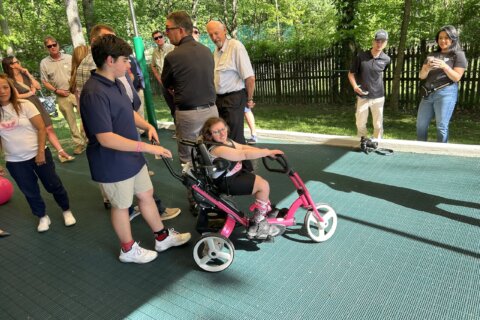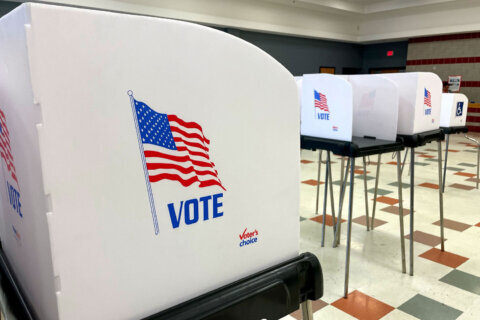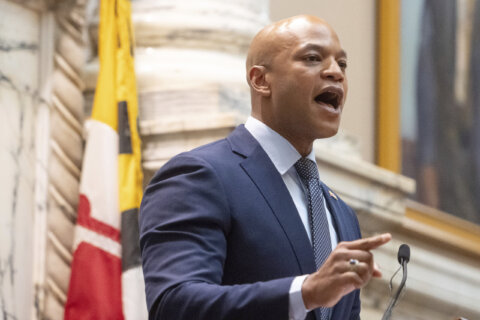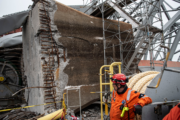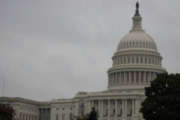
This article was republished with permission from WTOP’s news partners at Maryland Matters. Sign up for Maryland Matters’ free email subscription today.
This content was republished with permission from WTOP’s news partners at Maryland Matters. Sign up for Maryland Matters’ free email subscription today.
Last May, the University of Maryland’s Center for Vaccine Development and Global Health started clinical trials to test vaccine candidates. Pfizer-BioNTech and Moderna COVID-19 vaccines went on to show robust immune response rates, something that Elsa Vargas didn’t know when she signed up for the experimental trials in November.
“I only knew that with so many sick and dying I wanted to participate in a rapid cure,” she said.
The 31-year-old-mother-of-four works as a volunteer health promoter with CASA, the largest Latino and immigrant advocacy organization in the mid-Atlantic.
Vargas is among 50 health promoters, mostly volunteers like her, who have been trained to assist in CASA’s efforts to monitor COVID-19 outbreaks, advise on testing, and campaign against evictions for those who had lost their jobs during the health crisis.
Dolores Fontalvo and Elsa Vargas, health promoters for CASA, recently greeted shoppers outside of Mega Mart Latino Market in Langley Park, encouraging them to get COVID-19 vaccines. Photo by Rosanne Skirble.
On this day, masked and wearing a red CASA jersey and white cap, Vargas is stationed with Delores Fontalvo at Mega Mart Latino Market, a shopping spot popular among Latinos who live in the densely populated apartment complexes in Langley Park and Hyattsville, neighborhoods that have recorded some of the highest numbers of COVID-19 cases in the state.
U.S. Census records show Hispanics make up 10.6 percent of the state’s population, yet they account for 15 percent of COVID-19 cases and 8 percent of deaths, according to the Maryland Department of Health.
The disease spread among the Hispanic population as Latinos worked risky service jobs and were more likely to live in crowded multigenerational homes, said Dr. Michelle LaRue, Director of Health and Human Services at CASA.
“Our community has not had the benefit of paid sick leave and being able to work from home,” she said. “They’ve had to go out and expose themselves every day, but also to still feed their families and pay the rent.”
Latinos slow to vaccinate
About 45 percent of Maryland’s Hispanic population is vaccinated, compared to about 58 percent of white residents, according to data from the Kaiser Family Foundation. (The figures do not include the Johnson & Johnson single-dose vaccine, which has been used at similar rate among Hispanic and non-Hispanic populations.)
Even with the disparity, Maryland has the fourth-highest Hispanic vaccination rate in the country, according to Kaiser.
LaRue said barriers for Latino vaccination range from internet connectivity, computer literacy and transport to vaccination sites, which has been made worse by misinformation and fear about immigration status, especially where residents are undocumented and non-English speakers.
“Our health hotline has seen a 500 percent increase in volume of calls since the pandemic began because our community is suffering so much,” she said. “We need to make sure that we’re sharing information in Spanish, and in other languages, from people who they trust.”
This is how Vargas and Fontalvo make a difference, connecting with people in Spanish, knocking on doors or, depending on the day, talking with residents at highly trafficked areas like shopping centers, laundries, Metro and bus stops.
Norma Martinez, CEO of Health Pro, contracts with CASA to work on COVID response in Prince George’s and Montgomery counties, and coordinates the health promoters.
“Every month, every week, I send a calendar, but it’s a challenge,” Martinez said, of juggling the schedule to meet demand. “At the end of the day, we want [people] to be informed about services they may not know about or take advantage of.”
At a recent outing, Fontalvo, 72, was armed with a black Ama Su Vida — “Love Your Life” — mask and what she says is a positive attitude. She talked quickly while handing out flyers that list multiple nearby vaccination sites, open every day of the week.
“The vaccine is safe and free,” Fontalvo said, as she gifted child-size masks to kids while engaging their parents.
While some gave her a thumbs up, others like María Campos from El Salvador, weren’t convinced.
“I know two people who died after they were vaccinated. I’m going to wait,” she said.
Fontalvo acknowledged Campos’ loss, but tells her that risk of COVID-19 is far more dangerous than any side effects from the shot. “I’ve been a CASA health promoter for nearly 20 years, and vaccines save lives,” she said. “We can do the same with COVID.”
Campos took the flyer before walking away.
Vaccination clinics in Latino neighborhoods
In the basement of its headquarters in Langley Park, CASA has set up a vaccination clinic, working today in collaboration with the Prince George’s County Health Department and a team of health promoters, who help with the logistics.
A woman is vaccinated at the COVID-19 vaccine clinic established in the basement of CASA’s Langley Park headquarters. Photo by Rosanne Skirble.
This is where Kinsella Villalo, 41, comes after shopping at Mega Mart. She lives within walking distance, and said having the clinic close by made it easy to stop in.
“It’s our responsibility to get vaccinated and to be protected so that our families are well and the community around us is too,” she said, after her first jab of Moderna. “I’m bringing the rest of my family, including my teenage daughter.”
LaRue nodded in agreement.
She’s run 50 clinics like this one, with two sites in Montgomery and Prince George’s County, and two sites in Baltimore.
At this location, the flow has been slow but steady, as more and more find their way up the hill from the Langley Park apartment complexes steps away.
“Word of mouth is still a great way to get the word out in our community. They are going to be our best spokespeople for the vaccines within their own networks,” LaRue said.
“The gap is closing, but we’re not going to stop until everyone is vaccinated. There’s still work to be done,” she said.
But it is work that CASA cannot do on its own.
Statewide coalition addresses health inequities
In late May, the Mid-Atlantic LatinX Vaccine Equity Coalition (MALVEC) was formed to address health disparities among Latinos statewide.
The coalition grew out of a health initiative in Annapolis, led by Laura Gutierrez, Hispanic community specialist in the mayor’s office.
She said, according to data from the Health Department of Anne Arundel County, when the city opened its first community vaccine clinic in mid-March, about 3.6 percent of vaccines administered in the county went to Latinos.
Today that rate is about 13 percent. She credits the response to targeted outreach by health promoters who conducted community surveys, ran testing sites, encouraged residents to get vaccines, and staffed vaccination clinics.
Gutierrez now serves as the MALVEC chair alongside non-profit, academic, and governmental partners that include Johns Hopkins Medicine, George Washington University Milken School of Public Health, CASA, Maryland Latinos Unidos, Center of Help, and the City of Annapolis.
She expects other partners to follow.
“We’re hoping to build the health worker model, across Maryland, especially in those places that we know that there’s less access, less structure and fewer organizations dedicated to Latino and immigrant services,” Gutierrez said.
Closing the vaccination gap is a first step in a strategic plan to eliminate disparities in health care over all among Latinos.
“The vision is that as this coalition builds out, it will be able to bring together local groups that otherwise would have a much harder struggle to keep their work going,” Gutierrez said. “There is strength in numbers, and this coalition plans pave the way for that strength to translate into a workforce that will advance health equity for the Latinx community initially in Maryland, DC and Northern Virginia.”

